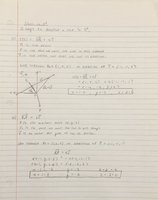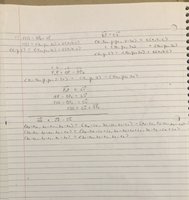Hello all. I’m studying Calc 3 by myself and one of the topics I’m studying is how to determine a line in R3 given a point and direction vector.
I’m using 2 different textbooks, and they both have different ways of doing it. One uses vector parametrization and the other uses vector equivalency. I have included a photo of me working out an example both ways and getting the same answer.
I think I understand the first one pretty well. But I am puzzled on how a completely different method also gives the same answer. It’s mind boggling and I want to understand it more. Any and all insight will be greatly appreciated.

I’m using 2 different textbooks, and they both have different ways of doing it. One uses vector parametrization and the other uses vector equivalency. I have included a photo of me working out an example both ways and getting the same answer.
I think I understand the first one pretty well. But I am puzzled on how a completely different method also gives the same answer. It’s mind boggling and I want to understand it more. Any and all insight will be greatly appreciated.


